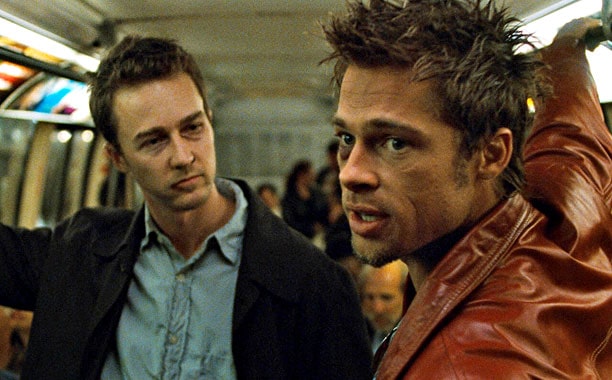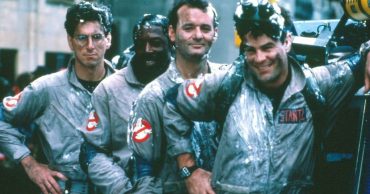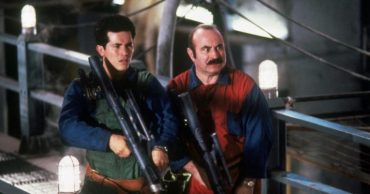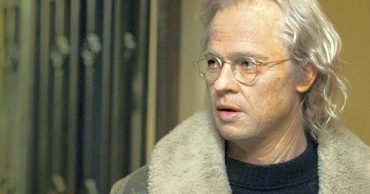
For better or worse, smartphones have become a big part of our lives. They affect how we shop, how we communicate with our friends, and the important stuff we rely on every day, like getting directions, and finding out where to buy a good cheeseburger. Internet provider Plusnet and an unnamed cartoonist imagined how iconic films of the past would pan out if the protagonists had smartphones, and the results are pretty entertaining.
The Shining

Based on an acclaimed Stephen King novel, Stanley Kubrick’s timeless horror, The Shining, is a movie that’s shrouded in folklore. The number of takes that the infamous “Here’s Johnny” scene took to nail, the real meaning behind Room 237, and the rumour that Kubrick typed the hundreds of “all work and no play” pages himself, have all contributed to the iconic perception of the film.
In the movie, Jack Torrance takes a job as a caretaker at the Overlook Hotel, a haunted, remote destination that slowly drives him to madness. He brings his family along for company, but soon isolation, boredom, and writer’s block — not to mention the otherworldly power of the hotel — transforms Jack into an axe-wielding maniac. The story reaches its crescendo as Jack stalks the snow-covered grounds of the Overlook, pursuing his son into a hedge maze for a final, climactic chase. But this could all have been avoided.
If only Jack had a smartphone to bring with him, there’d be no need to attack his family. As long as his signal held out, he would have an endless stream of entertainment to keep his mind occupied: a range of mobile games (we bet there’s some good Pokémon in the halls the of Overlook Hotel), social media to keep in touch with the outside world, and access to an unlimited number of downloadable books from which to gain inspiration.
Fight Club

The movie that assured a generation of men that their existential angst could be beaten out of them in a sweaty basement, Fight Club blends notions of masculinity, nihilism, and a biting criticism of consumerist culture.
Based on Chuck Palahniuk’s misanthropic novel of the same name, Fight Club charts the journey of self-destruction of an unnamed protagonist (played by Edward Norton) after a chance meeting with the charismatic Tyler Durden. Bored and frustrated with the trappings of an office 9-5 and an apartment filled with Ikea furniture, he and Tyler create an underground fighting club, recruiting legions of unsatisfied young men into their ranks. This underground cult morphs into Project Mayhem, a terrorist cell that carries out a series of increasingly audacious attacks, culminating in a devastating bombing.
The thing is, Tyler doesn’t really exist. He’s a figment of the main character’s imagination; a subconscious creation that wreaks havoc using his body as a vessel. If only he’d had a smartphone, one selfie would make Tyler’s fictional nature abundantly clear.
While there’s a chance that he would have simply visualised Tyler in the image (there’s even fan theories out there that suggest Marla Singer was also a figment of his imagination), we’re sure a keen-eyed commenter is likely to have brought him back down to earth pretty quickly. That is, of course, unless Tyler’s vehement hatred of consumerism didn’t cause him to throw the smartphone into a river in the first place.
Cast Away

Emerging just after a long era of disaster movies seemingly intent on encouraging you to never leave the house again, Cast Away explored the mental and psychical turmoil of being deserted on a remote, uninhabited island.
Chuck Noland, a dedicated FedEx worker, is flying to Malaysia when his plane crashes. As the only survivor, he washes up alone on a deserted island. He’s stranded for four years before the equipment he requires to fashion a raft floats ashore, in the meantime befriending a volleyball that he paints a face onto. As his only means of socialisation, Chuck speaks to Wilson (the volleyball) as if it were a real person, staving off the loneliness and despair of his plight.
Now, if Chuck had a smartphone, he could spend every day sunbathing, keeping in contact with the outside world over social media, and watching critically acclaimed shows on Netflix — because even Wilson knows good TV when he sees it.
This is, of course, if we conveniently ignore the fact he’d have no way of charging his phone, and we can only assume the 4G reception on a remote, tropical island is ‘unpredictable’ at best.
The Lord of The Rings

A genre-defining epic that spawned many imitators and spin-offs, the big-screen adaptation of J. R. R. Tolkien’s classic novel The Lord of the Rings was a revelation in bringing a much-loved fantasy world to life, not to mention the spectacular filming locations, acting, GCI, and visual effects.
Taking place over more than nine hours of epic battles, fearsome foes and shaky alliances, The Lord of the Rings trilogy was based, essentially, on one central concept: the inability to access directions.
Frodo needed guidance every step of the way to reach Sauron’s base in Mordor, forcing him to enlist the help of Aragon, Gimli, Legolas, Gandalf, Boromir, Samwise, Pippin, and Merry. The fellowship was a metaphorical magnet for trouble, with wave after wave of sword-wielding bad guys thwarting their progress at every turn.
A smartphone would have done a lot of the fellowships’ jobs for them. There’d be no need to enlist the help of the untrustworthy Gollum (which would have robbed us of the hilarity of the Po-ta-toes scene), and made it much simpler for Frodo to avoid the giant spiders, hordes of bloodthirsty orcs, and stampeding Nazgul that lay in his path.
With a convenient route to Mordor in the palm of his hand, Frodo could easily destroy the ring, defeating Sauron and saving all of middle earth in a jiffy. Or he could have gotten a lift from Gandalf’s eagle. Either way.
Jingle All the Way

A Christmas adventure that explores some of the more unpleasant sides of the holiday in terms of consumerism and materialism, Jingle All the Way was met with a less than glowing critical reception, but enjoyed a storming box office success. Starring Arnold Schwarzenegger and Phil Hartman of The Simpsons fame, this classic festive romp enjoyed a cult success for many years after release.
After Howard Langston, played by Schwarzenegger, misses one too many social engagements with his son, he seeks to make amends by buying him the most sought after toy in the world at that point: Turbo Man.
Reminiscent of the real-life Christmas battle for Buzz Lightyear action figures that would occur years later, Howard is forced to fight his way across the shopping malls of America in search of this elusive toy. Along the way, he battles a motley crew of men dressed like Santa, gets into scrapes with the police, and ends up in a very public brawl at a parade while dressed as Turbo Man.
If smartphones existed in Jingle All the Way, Howard could have simply opened his Amazon app, made a quick purchase of the Turbo Man action figure, and given his son what he wanted for Christmas. No punching Santa, no conflicts with shopping mall rivals, and no emotional epiphany when they realise that maybe mindless, militant consumerism isn’t what Christmas is all about.
The Ring

A remake of a critically acclaimed Japanese horror, The Ring is based on one of the oldest urban myth tropes in existence, eg. do something, and then later, you’ll die. This simple concept is given a compelling backstory, with some genuinely terrifying moments thrown into the mix — who could forget the long-haired girl climbing out of the TV?
The Ring begins with two teenage girls discussing a haunted tape. One of the girls has already watched it and thinks that the rumour of her impending doom has been exaggerated. Little does she know, the spooky powers of the tape have been activated, and her time in the movie is about to be cut to an abrupt end.
Now, I don’t know much about teenagers, but most of the ones I know are constantly glued to their phone, sending messages to their friends, taking endless photos of themselves, and checking up on their social media profiles. If the characters in The Ring had a smartphone, it’s likely they’d at least have cursory Google for reviews before watching anything.
Considering that viewing the tape ensures a certain death, it’s unlikely that it would be ‘certified fresh’ on Rotten Tomatoes. The IMDB reviews alone would be enough to put off anyone who considered watching it, saving countless lives, and preventing a whole bunch of spooky goings-on in the process.
Psycho

Alfred Hitchcock’s masterpiece, Psycho, changed American cinema forever upon its release, redefining what notoriously-strict 1960s film censors and the movie-going public were prepared to accept in terms of violence and sexuality. The shower scene is one of the most truly iconic moments of film, with the high-pitched shriek of a violin becoming an instantly recognisable reference to this timeless thriller.
Psycho tells the story of Marion Crane, a young secretary who steals $40k from a work client before fleeing across the country. After a journey fraught with near-misses with the law, she eventually checks into the Bates Motel following an intense rainstorm. Here, she encounters Norman Bates, a seemingly mild mannered young man with a strange and disturbing relationship with his mother. This doesn’t end well for Marion, or the private detective that goes looking for her — but what if she never stayed there to begin with?
TripAdvisor rarely saves lives. It can save you from paying too much to visit a crappy restaurant or stay in a subpar hotel, but it doesn’t usually prevent you from getting stabbed violently to death. But if Marion had been able to check out reviews of Bate’s Motel and seen the high probability of being murdered, she’d have probably given it a miss.
 Follow Us
Follow Us





